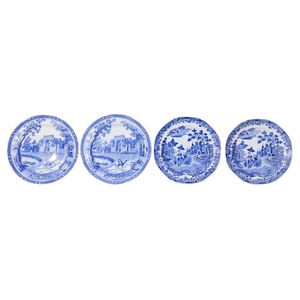Blue and white patterns became popular in China in the early 14th century during the Ming Dynasty and were hand painted.
The majority of the blue and white ware found and collected today in Australia is of English and European origin and dates from the late 18th century onwards, when the development of transfer-printing led to a huge expansion in production.
Chinese scenes, floral motifs, scenes incorporating classical architecture and pastoral themes are prevalent.
Blue and white ware was not made by a single maker, but was produced by many factories, with Spode and Wedgwood being the most prolific. Much blue and white ware was made by Staffordshire factories and is unmarked.
Plates are probably the most widely collected form as the surface shows the pattern to its best advantage. Platters and dishes are also popular for the same reason, but are larger and take up more display space
more...
.
The pattern depicted will affect value and desirability – a plate with the ‘Willow’ pattern will be worth less than one with a rarer design. Size is also important – large pieces are usually more valuable, but certain shapes are rarer and therefore more desirable.
less...

 Loading more...
Loading more...